Various surveys have suggested that the majority of UK farmers voted to leave the EU back in 2016, with support broadly in line with the 52% v 48% of the wider UK population.
In Northern Ireland (NI), the narrative often put across since the vote was that the majority of farmers were also in favour of Brexit. That assumption is generally based on a show of hands at a debate organised by the Ulster Farmers’ Union (UFU) just ahead of the 23 June referendum.
Among the 300-strong crowd, no doubt most farmers present were in favour of a vote to leave, but it is quite the stretch to suggest the crowd was fully representative of 24,500 farm businesses across NI.
Either way, a significant proportion of NI farmers supported Brexit. For some, the decision to want out of the EU was partly driven by frustration related to low farmgate prices, with average milk prices in June 2016 below 18p/l, beef around 320p/kg, lamb at 390p/kg, and pigs under 120p/kg.
But speaking to farmers at the time, many were simply fed up with EU red tape and, in particular, the requirements that came with farm payments and the rules around nitrates that led to a ban on slurry spreading in winter months.
Some of the criticism was fair, but some of the rules and regulations were necessary, while others were actually of our own making and due to bad policy decisions taken locally.
However, it is always much easier to deflect criticism coming your way on to someone else – the bureaucrats in Brussels were an easy target when it came to unpopular agricultural policy developments in NI down the years.
So it was understandable that when farmers were promised a “bonfire of regulations” by Brexiteers, it was a message that many responded positively towards. But what then happened in reality was that the British government rolled over most EU regulations into UK law, so nothing has really changed.
However, even the most ardent Remainers have to accept that there is a benefit of Brexit, which is that it has given NI the ability to design a future agricultural policy suited to its own needs.
It is not a total free-for-all, and NI must still design policies that are compliant with World Trade Organisation (WTO) requirements.
Those rules mean that most support to farmers must not lead to trade distortion or increased production.

Irish Farmers Journal NI editor David Wright, left, asking Environment Secretary George Eustice right a question during his visit to Balmoral Show. \ Houston Green
In addition, the NI Protocol element of the Brexit Withdrawal Agreement between the UK and EU brings with it some particular confines.
Firstly, the Protocol means that goods from NI can move freely across the Irish border and into the EU, but those NI goods must still be produced to EU rules.
Secondly, under the Protocol, the total amount of support that can be given to NI farmers is effectively capped at £382.2m, which is a figure broadly comparable with total annual CAP funding coming to NI farmers pre-Brexit.
But outside of all that, there is nothing in the Protocol stopping NI designing its own farm support regime. If we get it wrong, there is no one else to blame.
The CAP that shaped agriculture in Northern Ireland
Since 1973, and right up to the end of the Brexit withdrawal agreement in December 2020, NI farmers have operated under the CAP, so it has shaped NI agriculture over that period.
In the 1970s and 1980s the CAP supported output, which eventually led to over-production across the EU.
While NI agriculture made only a minimal contribution to this over-production (total cattle numbers have hardly changed since 1973), there has been a gradual switch to dairy, and a focus on genetics has brought higher milk yields.
Milk quotas introduced in 1984 did put the brakes on the dairy industry, but unlike counterparts in the Republic of Ireland, these shackles were released in NI long before the end of the milk quota regime in 2015.
By the mid-2000s, contraction in Britain meant the UK as a whole was significantly under quota, and NI farmers were able to expand. In 2003, NI produced 1.78bn litres and, by 2014, this had increased to 2.2bn litres.
Beef and sheep
In the beef sector, overall output has remained reasonably consistent over the last 50 years, although processors are now more reliant on beef crosses coming from the dairy herd.
Suckler cow numbers peaked in the 1990s at over 344,000 head as farmers maximised income from various income support schemes and, in particular, the suckler cow premium.
Along with the likes of the beef special premium, these schemes had received much higher levels of funding as part of the 1992 MacSharry reforms. Suckler cow numbers have fallen nearly 30% since then.
It is a similar scenario in the sheep sector, where payments on ewes encouraged farmers to keep more. Ewe numbers in NI doubled between 1973 and 1987 and hit 1.43m in 1992. They have since fallen back to under 1m.
Cereal crops
One sector where the CAP did little to encourage production in NI was the growing of cereal crops. While Europe might have had a surplus, NI is a grain deficit area. When the principle of set-aside was first established in 1988, there were 51,617ha of cereal crops in NI. By 2000, this had dropped to nearly 40,000ha, and it has since fallen to under 30,000ha.
Incomes
There is no doubt that the CAP supported farm incomes in NI, especially in the beef and sheep sectors.
Since 1990, NI poultry and egg production has virtually trebled
However, on a significant number of farms, it was the addition of a poultry enterprise that kept these farms viable as full-time units. Since 1990, NI poultry and egg production has virtually trebled, despite it being a sector that has received no direct CAP support.
Dealing with the aftermath of 2005 reform
The NI farming industry is a predominantly grass-based livestock industry and, as a result, NI farmers drew down significant CAP support payments over the years, especially those targeted at sucklers and beef.
That is reflected in payment rates post the 2005 CAP reform when money was decoupled from production to an area-based payment (the Single Farm Payment (SFP)).
NI ended up with one of the highest per-hectare (ha) payments in Europe at an average of €330/ha, compared to around €270/ha in the Republic of Ireland (ROI), €265/ha in England, €247/ha in Wales and just €130/ha in Scotland.
However, there was significant divergence across the regions in how the SFP was paid out. England started with an area-payment based on historic claims in the reference years from 2000 to 2002, but opted to move to a flat-rate area payment over an eight-year period.
By 2012, two payment rates would apply dependent on land type (severely disadvantaged area and other).
The ROI chose to base future SFP on historic claims in the reference years from 2000 to 2002, while NI opted for a complicated approach, basing the new SFP on a so-called static vertical hybrid model.
Flat rate
That model included a flat-rate element worth €78.33/ha, which was included to try to ensure that some of the money previously claimed by the likes of beef finishers actually ended up with primary producers.
In the calculations behind the model, the main funding for the flat-rate payment came from a 50% reduction in historic claims of beef special premium (BSP). In practice, many primary producers sold their calves “clean eared”, with a beef finisher then able to claim two BSP payments.
If future SFP was based solely on historic subsidy claims, it was deemed that primary producers, principally operating on disadvantaged land, would have lost out.
The problem with the static vertical hybrid model was that it drew over 10,000 landowners into the system (able to claim €78.33/ha). That became a real issue in the run-up to the 2015 CAP reform, when it became clear that the EU wanted member states to move towards flat area-based payments. If these landowners were able to continue to claim payment, their entitlement values were set to transition to €330/ha. It would be a significant shift in money away from active farmers to those who just own land.
Active farmer rules
Ahead of the 2015 CAP reform, the farming industry lobbied hard for an ‘active farmer’ definition that would ensure direct support only went to those actively farming the land.
The relevant EU regulation bringing in the 2015 reforms had a relatively loose definition of what constituted an “active farmer”, but it did give member states some scope to add clarity.
NI came up with wording that only “the person having decision-making power, benefits and financial risks” could claim on a parcel of land.
In 2014, the Department of Agriculture wrote to those it believed were letting their land in conacre, encouraging them to transfer entitlements to the person actually producing livestock, crops, etc, off that land.
That largely worked. In 2013, there were around 37,000 SFP claimants, and this fell to 26,500 in 2015. There are around 24,500 now.
However, some landowners have stayed in the system and claim to be growing grass for sale.
At its most basic level, a landowner who just keeps land in good condition by regular topping can still legitimately claim payments.
But in a future payment system, around 1,300 landowners are set to be excluded, due to a new rule that will require them to have livestock or at least 3ha of crops.
A new system of NI farm support
Since 2020, farm support money in NI has come from the UK Treasury, with funding in line with what was available in the CAP, and many of the same rules applying.
Back in 2015, NI opted to move basic payment scheme (BPS) entitlements towards a flat-rate payment in seven equal steps, meaning all entitlements would converge at around €330/ha in 2021.
However, the 2015 CAP reform period ran to 2019, so there was only a legal basis to move five of the seven steps to a flat rate.
With no great appetite among the Department of Agriculture, Environment and Rural Affairs (DAERA), and the farm lobby, to complete the convergence process, farmers remain locked in at 2019 entitlement values. It means that agricultural activity back in 2000 to 2002 still has some bearing on entitlement values 20 years later.
Sustainability payment
Looking ahead, it is expected that BPS will continue as it is now in 2023, ahead of a change to a new system of payments starting in 2024.
Most of the funding available will initially be targeted at a new area-based sustainability payment, but over time, the budget for this will be reduced as money is directed at a Farming with Nature package of measures. In the long term, this agri-environment scheme is to form the “central plank” of farm support.
But, in the short to medium term, it is the new sustainability payment that will underpin NI farm incomes.
New standards
To get the payment, farmers will have to comply with new farm sustainability standards (to replace cross-compliance rules) and take part in a new soil nutrient health scheme.
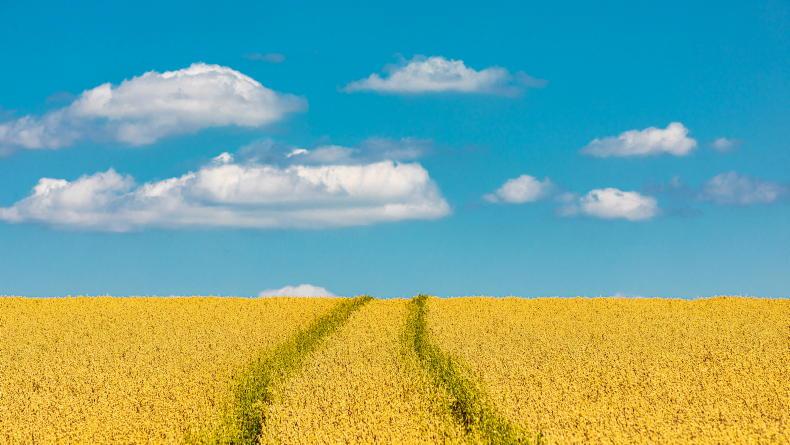
One sector where the CAP did little to encourage production in NI was the growing of cereal crops. \ Philip Doyle
All land outside of hard features (buildings, lanes, etc) will be eligible to claim entitlements, which brings in an extra 40,000 ha (4% of land area) in NI. With current BPS entitlements rolled over, it will take the pressure off farmers to keep all land eligible for payments.
However, there will be a progressive cap on the sustainability payment, starting at £60,000, up to a maximum of £190,000. Capping is likely to impact an estimated 265 farm businesses.
At the lower end, minimum claim size is to be increased from 3ha to 5ha, which is likely to exclude 1,463 BPS claimants. In addition, to be eligible for the payment, farmers will need to have evidence from 2020 or 2021 that they grew crops or kept livestock.
Beef sustainability
One big change that is to happen in 2024 is that up to 17% (around £50m) of the farm support budget is to be targeted at a new beef sustainability package, with two measures designed to improve the productivity, and reduce the carbon footprint, of NI beef production.
The first measure is targeted at suckler cows. To be eligible, a mature cow must have a calving interval (days from one calving to the next) of 415 days or less in the first year of the scheme, moving to a maximum of 385 days by year four.
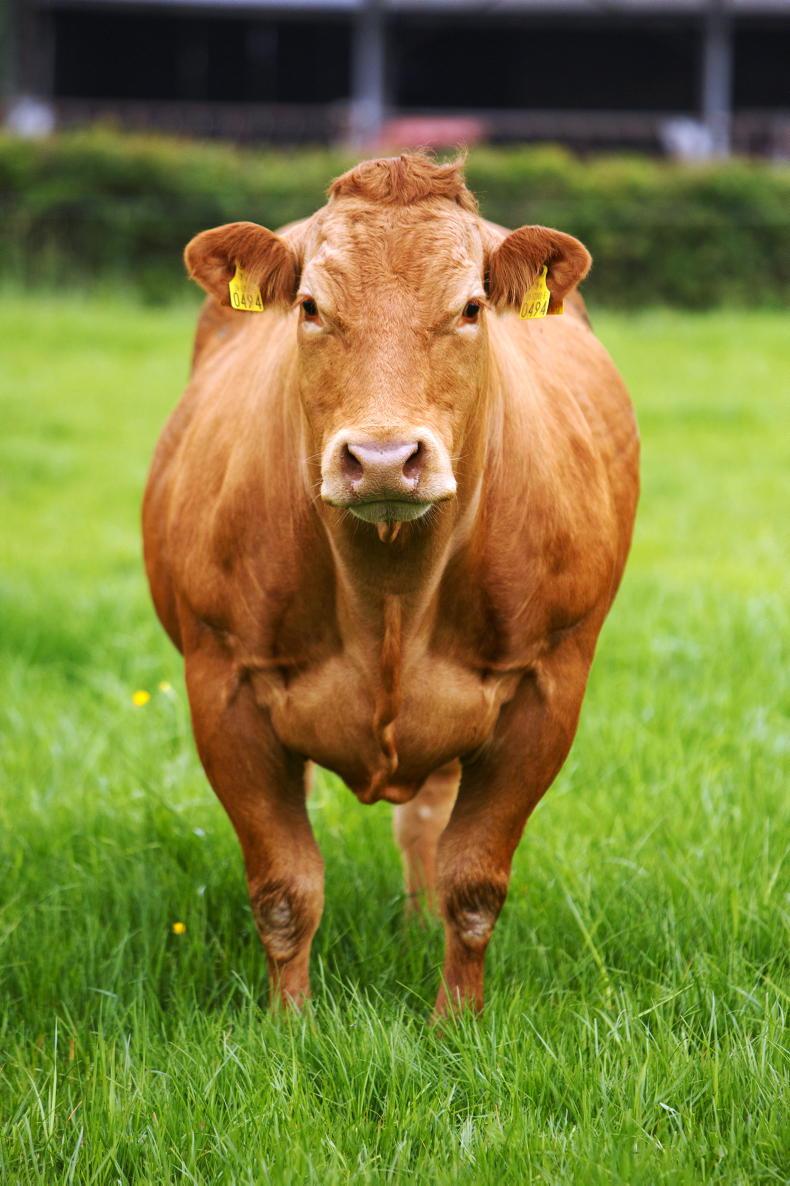
One big change that is to happen in 2024 is that up to 17% (around £50m) of the farm support budget is to be targeted at a new beef sustainability package. \ Donal O'Leary
For a heifer to qualify for the payment, it must be under 34 months at calving in year one, moving to under 29 months by year four.
The second element of beef support is a carbon reduction measure. This aims to reduce the age at slaughter of prime beef cattle, setting a limit of 30 months, falling to a maximum of 26 months by year four.
Compliance with WTO rules
To remain compliant with World Trade Organisation rules, both measures will be limited to a certain number of animals, so in the case of a suckler payment that is likely to mean a quota system.
It has some hallmarks of a return to the pre-2005 days of suckler cow premium and beef special premium schemes, but with many more conditions attached.
There can be little doubt that Northern Ireland’s agricultural system has been heavily influenced by Europe’s Common Agricultural Policy over the past decades. This has impacted both the structure of the industry and the systems of farming. Brexit has changed relationships and brought uncertainty. But, fundamentally, while the UK is now free to design its own agricultural policy, the final landing point might not actually be that different to the EU.
Various surveys have suggested that the majority of UK farmers voted to leave the EU back in 2016, with support broadly in line with the 52% v 48% of the wider UK population.
In Northern Ireland (NI), the narrative often put across since the vote was that the majority of farmers were also in favour of Brexit. That assumption is generally based on a show of hands at a debate organised by the Ulster Farmers’ Union (UFU) just ahead of the 23 June referendum.
Among the 300-strong crowd, no doubt most farmers present were in favour of a vote to leave, but it is quite the stretch to suggest the crowd was fully representative of 24,500 farm businesses across NI.
Either way, a significant proportion of NI farmers supported Brexit. For some, the decision to want out of the EU was partly driven by frustration related to low farmgate prices, with average milk prices in June 2016 below 18p/l, beef around 320p/kg, lamb at 390p/kg, and pigs under 120p/kg.
But speaking to farmers at the time, many were simply fed up with EU red tape and, in particular, the requirements that came with farm payments and the rules around nitrates that led to a ban on slurry spreading in winter months.
Some of the criticism was fair, but some of the rules and regulations were necessary, while others were actually of our own making and due to bad policy decisions taken locally.
However, it is always much easier to deflect criticism coming your way on to someone else – the bureaucrats in Brussels were an easy target when it came to unpopular agricultural policy developments in NI down the years.
So it was understandable that when farmers were promised a “bonfire of regulations” by Brexiteers, it was a message that many responded positively towards. But what then happened in reality was that the British government rolled over most EU regulations into UK law, so nothing has really changed.
However, even the most ardent Remainers have to accept that there is a benefit of Brexit, which is that it has given NI the ability to design a future agricultural policy suited to its own needs.
It is not a total free-for-all, and NI must still design policies that are compliant with World Trade Organisation (WTO) requirements.
Those rules mean that most support to farmers must not lead to trade distortion or increased production.

Irish Farmers Journal NI editor David Wright, left, asking Environment Secretary George Eustice right a question during his visit to Balmoral Show. \ Houston Green
In addition, the NI Protocol element of the Brexit Withdrawal Agreement between the UK and EU brings with it some particular confines.
Firstly, the Protocol means that goods from NI can move freely across the Irish border and into the EU, but those NI goods must still be produced to EU rules.
Secondly, under the Protocol, the total amount of support that can be given to NI farmers is effectively capped at £382.2m, which is a figure broadly comparable with total annual CAP funding coming to NI farmers pre-Brexit.
But outside of all that, there is nothing in the Protocol stopping NI designing its own farm support regime. If we get it wrong, there is no one else to blame.
The CAP that shaped agriculture in Northern Ireland
Since 1973, and right up to the end of the Brexit withdrawal agreement in December 2020, NI farmers have operated under the CAP, so it has shaped NI agriculture over that period.
In the 1970s and 1980s the CAP supported output, which eventually led to over-production across the EU.
While NI agriculture made only a minimal contribution to this over-production (total cattle numbers have hardly changed since 1973), there has been a gradual switch to dairy, and a focus on genetics has brought higher milk yields.
Milk quotas introduced in 1984 did put the brakes on the dairy industry, but unlike counterparts in the Republic of Ireland, these shackles were released in NI long before the end of the milk quota regime in 2015.
By the mid-2000s, contraction in Britain meant the UK as a whole was significantly under quota, and NI farmers were able to expand. In 2003, NI produced 1.78bn litres and, by 2014, this had increased to 2.2bn litres.
Beef and sheep
In the beef sector, overall output has remained reasonably consistent over the last 50 years, although processors are now more reliant on beef crosses coming from the dairy herd.
Suckler cow numbers peaked in the 1990s at over 344,000 head as farmers maximised income from various income support schemes and, in particular, the suckler cow premium.
Along with the likes of the beef special premium, these schemes had received much higher levels of funding as part of the 1992 MacSharry reforms. Suckler cow numbers have fallen nearly 30% since then.
It is a similar scenario in the sheep sector, where payments on ewes encouraged farmers to keep more. Ewe numbers in NI doubled between 1973 and 1987 and hit 1.43m in 1992. They have since fallen back to under 1m.
Cereal crops
One sector where the CAP did little to encourage production in NI was the growing of cereal crops. While Europe might have had a surplus, NI is a grain deficit area. When the principle of set-aside was first established in 1988, there were 51,617ha of cereal crops in NI. By 2000, this had dropped to nearly 40,000ha, and it has since fallen to under 30,000ha.
Incomes
There is no doubt that the CAP supported farm incomes in NI, especially in the beef and sheep sectors.
Since 1990, NI poultry and egg production has virtually trebled
However, on a significant number of farms, it was the addition of a poultry enterprise that kept these farms viable as full-time units. Since 1990, NI poultry and egg production has virtually trebled, despite it being a sector that has received no direct CAP support.
Dealing with the aftermath of 2005 reform
The NI farming industry is a predominantly grass-based livestock industry and, as a result, NI farmers drew down significant CAP support payments over the years, especially those targeted at sucklers and beef.
That is reflected in payment rates post the 2005 CAP reform when money was decoupled from production to an area-based payment (the Single Farm Payment (SFP)).
NI ended up with one of the highest per-hectare (ha) payments in Europe at an average of €330/ha, compared to around €270/ha in the Republic of Ireland (ROI), €265/ha in England, €247/ha in Wales and just €130/ha in Scotland.
However, there was significant divergence across the regions in how the SFP was paid out. England started with an area-payment based on historic claims in the reference years from 2000 to 2002, but opted to move to a flat-rate area payment over an eight-year period.
By 2012, two payment rates would apply dependent on land type (severely disadvantaged area and other).
The ROI chose to base future SFP on historic claims in the reference years from 2000 to 2002, while NI opted for a complicated approach, basing the new SFP on a so-called static vertical hybrid model.
Flat rate
That model included a flat-rate element worth €78.33/ha, which was included to try to ensure that some of the money previously claimed by the likes of beef finishers actually ended up with primary producers.
In the calculations behind the model, the main funding for the flat-rate payment came from a 50% reduction in historic claims of beef special premium (BSP). In practice, many primary producers sold their calves “clean eared”, with a beef finisher then able to claim two BSP payments.
If future SFP was based solely on historic subsidy claims, it was deemed that primary producers, principally operating on disadvantaged land, would have lost out.
The problem with the static vertical hybrid model was that it drew over 10,000 landowners into the system (able to claim €78.33/ha). That became a real issue in the run-up to the 2015 CAP reform, when it became clear that the EU wanted member states to move towards flat area-based payments. If these landowners were able to continue to claim payment, their entitlement values were set to transition to €330/ha. It would be a significant shift in money away from active farmers to those who just own land.
Active farmer rules
Ahead of the 2015 CAP reform, the farming industry lobbied hard for an ‘active farmer’ definition that would ensure direct support only went to those actively farming the land.
The relevant EU regulation bringing in the 2015 reforms had a relatively loose definition of what constituted an “active farmer”, but it did give member states some scope to add clarity.
NI came up with wording that only “the person having decision-making power, benefits and financial risks” could claim on a parcel of land.
In 2014, the Department of Agriculture wrote to those it believed were letting their land in conacre, encouraging them to transfer entitlements to the person actually producing livestock, crops, etc, off that land.
That largely worked. In 2013, there were around 37,000 SFP claimants, and this fell to 26,500 in 2015. There are around 24,500 now.
However, some landowners have stayed in the system and claim to be growing grass for sale.
At its most basic level, a landowner who just keeps land in good condition by regular topping can still legitimately claim payments.
But in a future payment system, around 1,300 landowners are set to be excluded, due to a new rule that will require them to have livestock or at least 3ha of crops.
A new system of NI farm support
Since 2020, farm support money in NI has come from the UK Treasury, with funding in line with what was available in the CAP, and many of the same rules applying.
Back in 2015, NI opted to move basic payment scheme (BPS) entitlements towards a flat-rate payment in seven equal steps, meaning all entitlements would converge at around €330/ha in 2021.
However, the 2015 CAP reform period ran to 2019, so there was only a legal basis to move five of the seven steps to a flat rate.
With no great appetite among the Department of Agriculture, Environment and Rural Affairs (DAERA), and the farm lobby, to complete the convergence process, farmers remain locked in at 2019 entitlement values. It means that agricultural activity back in 2000 to 2002 still has some bearing on entitlement values 20 years later.
Sustainability payment
Looking ahead, it is expected that BPS will continue as it is now in 2023, ahead of a change to a new system of payments starting in 2024.
Most of the funding available will initially be targeted at a new area-based sustainability payment, but over time, the budget for this will be reduced as money is directed at a Farming with Nature package of measures. In the long term, this agri-environment scheme is to form the “central plank” of farm support.
But, in the short to medium term, it is the new sustainability payment that will underpin NI farm incomes.
New standards
To get the payment, farmers will have to comply with new farm sustainability standards (to replace cross-compliance rules) and take part in a new soil nutrient health scheme.

One sector where the CAP did little to encourage production in NI was the growing of cereal crops. \ Philip Doyle
All land outside of hard features (buildings, lanes, etc) will be eligible to claim entitlements, which brings in an extra 40,000 ha (4% of land area) in NI. With current BPS entitlements rolled over, it will take the pressure off farmers to keep all land eligible for payments.
However, there will be a progressive cap on the sustainability payment, starting at £60,000, up to a maximum of £190,000. Capping is likely to impact an estimated 265 farm businesses.
At the lower end, minimum claim size is to be increased from 3ha to 5ha, which is likely to exclude 1,463 BPS claimants. In addition, to be eligible for the payment, farmers will need to have evidence from 2020 or 2021 that they grew crops or kept livestock.
Beef sustainability
One big change that is to happen in 2024 is that up to 17% (around £50m) of the farm support budget is to be targeted at a new beef sustainability package, with two measures designed to improve the productivity, and reduce the carbon footprint, of NI beef production.
The first measure is targeted at suckler cows. To be eligible, a mature cow must have a calving interval (days from one calving to the next) of 415 days or less in the first year of the scheme, moving to a maximum of 385 days by year four.

One big change that is to happen in 2024 is that up to 17% (around £50m) of the farm support budget is to be targeted at a new beef sustainability package. \ Donal O'Leary
For a heifer to qualify for the payment, it must be under 34 months at calving in year one, moving to under 29 months by year four.
The second element of beef support is a carbon reduction measure. This aims to reduce the age at slaughter of prime beef cattle, setting a limit of 30 months, falling to a maximum of 26 months by year four.
Compliance with WTO rules
To remain compliant with World Trade Organisation rules, both measures will be limited to a certain number of animals, so in the case of a suckler payment that is likely to mean a quota system.
It has some hallmarks of a return to the pre-2005 days of suckler cow premium and beef special premium schemes, but with many more conditions attached.
There can be little doubt that Northern Ireland’s agricultural system has been heavily influenced by Europe’s Common Agricultural Policy over the past decades. This has impacted both the structure of the industry and the systems of farming. Brexit has changed relationships and brought uncertainty. But, fundamentally, while the UK is now free to design its own agricultural policy, the final landing point might not actually be that different to the EU.









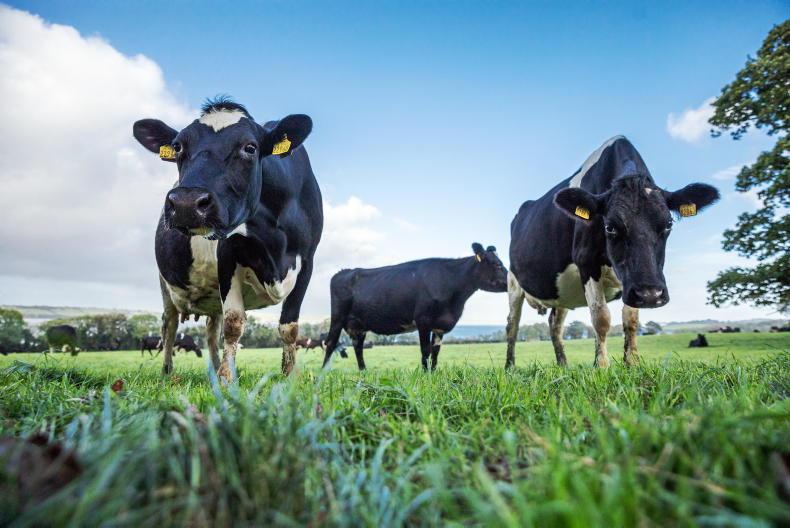

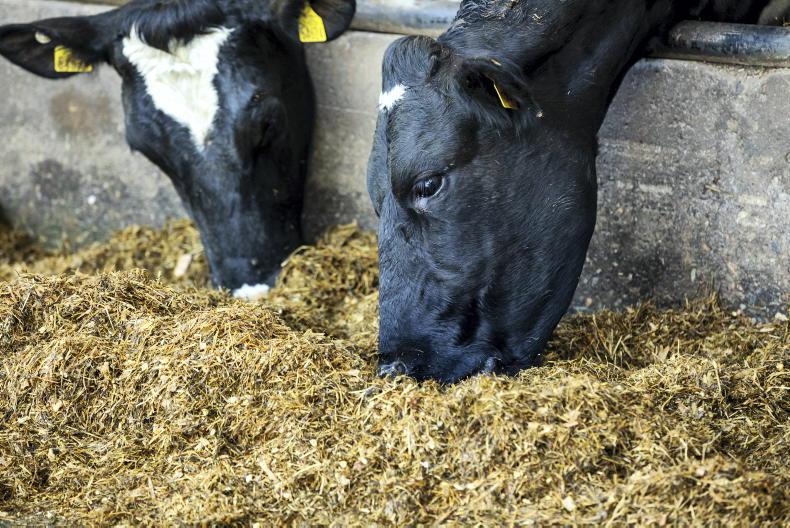
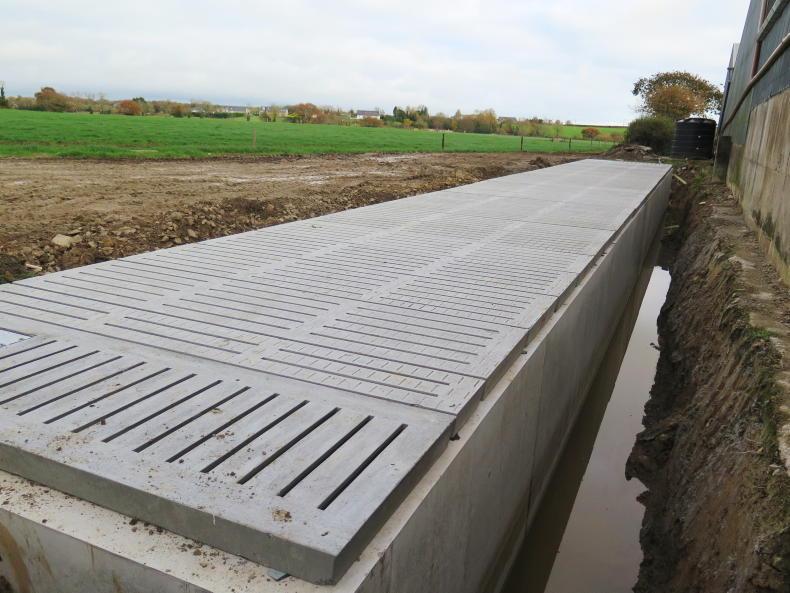
SHARING OPTIONS